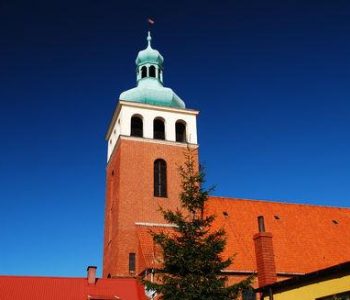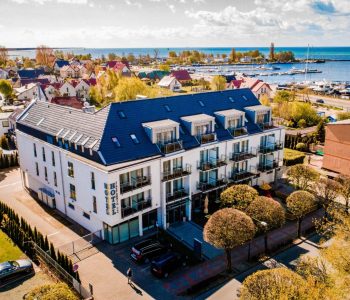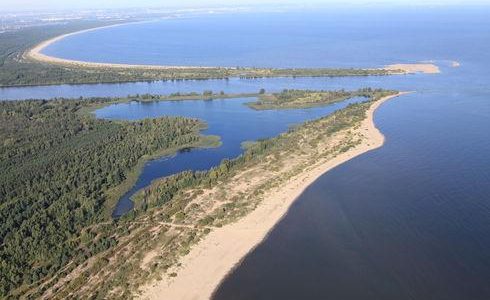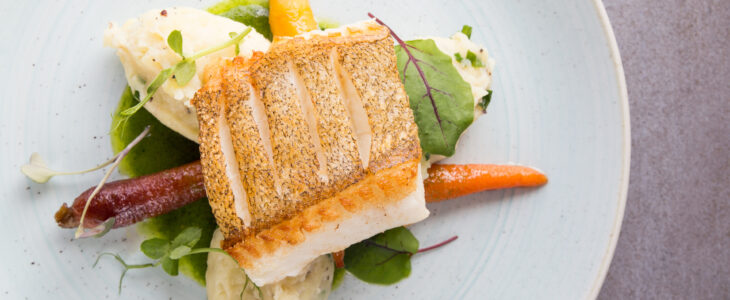It became a real holiday resort only in the 1920’s, when the railroad was brought into the peninsula. Before that, the spit was accessible only from the sea, by fishing boats heading for Gdańsk or Puck. This kind of passage depended on the wind force and direction, and took as much as 10 hours, which did not discourage the tourists, who visited the peninsula willingly but in smaller numbers.
The traditional fishermen’s architecture, which remains in Jastarnia to this day, gives this place its unique character, and a walk through fishermen’s streets is an unforgettable touristic experience. Decorated on top with small shrines and images of saints, the fishermen’s huts let the tourist “travel” to the times when Jastarnia used to be a fishermen’s village. The Neo-Baroque church, very popular among tourists, is yet another place worth mentioning. Erected in the inter-war period, the sanctuary is distinguished by maritime interior decorations. White – blue – sea-green colours used inside, emphasise the affinity of of the parishioners with the sea and its traditions, and the church’s pulpit is in the shape of a traditional fishing boat on a rough sea, with beautiful stained-glass windows and paintings on the church’s walls. The exterior is characterised by the 47-metre-high church tower, topped with a Baroque style dome. There is also a cemetery commemorating the fishermen who lost their lives in the dark sea waters, with symbolic commemorative plaques to Jastarnia’s drowned.
An interesting element of the town’s scenery is the lighthouse located on a low dune. It has warned sailors since 1950, when it replaced the bombarded 1939 lighthouse. What is also interesting is the fact that the lighthouse’s core is made of the elements that were used for the base of the Stilo lighthouse. This is the lowest beacon to aid marine navigation on the Polish shoreline. It stands 13.3 metres high and produces a light signal visible from a distance of 15 nautical miles.
Due to the town’s piscatorial character, there are as many as three fishing museums in Jastarnia. Each of them is worth visiting, as they exhibit unique objects that used to be employed by the fishermen during fishing and in their everyday lives.
The museum of “”Chata Rybacka” (“Fisherman’s hut”) is located in an originally-preserved fisherman’s hut, built mainly of wood yielded by the sea, giving the place a unique character.
The private museum of Juliusz Struck, called “”Pod Strzechą” (“Under the thatch”), is a unique collection of family keepsakesand fishing tools,and also a boatbuilding workshop, where one can observe the methods of constructing traditional fishing boats.
The last, and unofficial, museum is the fishermen in the harbour master’s office where, as well as fishing tools, the Jastarnia’s harbour master collected the tools and objects fished out by the fishermen.
Jastarnia’s importance and strategic location are emphasised by the nearby war shelters, part of the Jastarnia Centre of Resistance complex, built as part of the Hel Fortified Area. They were built to defend the land against attacks on the occupants. Due to the beneficial geographical conditions, and as in the vicinity of Jastarnia the peninsula spans as many as 450 metres of width, the place turned out to be the ideal location for defence installations at Sęp, Sokół, Saragossa and Sabała. Commencing in May 1939, the construction of the defence installations was only supposed to take a few months; however, the enemy’s invasion of Poland in September 1939 disrupted these plans. Currently, the shelters constitute one of the best-preserved fortifications of the peninsula, available to everyone.
Jastarnia is not only about fishing and the military, but also leisure, relaxation and an opportunity to spend your free time in various ways, mostly actively. Wide beaches encourage lengthy idleness and fun in the golden sand, and the shallow waters of the “Little Sea” (“”Małe Morze”) attract many water-sports fans. Among the numerous attractions of Jastarnia are kitesurfing, windsurfing, motorboats and water scooters. Local fishermen offer sightseeing cruises in the bay in traditional fishing boats, and those who travel by their own yachts can use the marina, with 70 berthing places.
Beautiful beaches, a special atmosphere, iodine-rich air, the warm waters of the Bay of Puck (Zatoka Pucka) and the sound of open sea waves, together produce ideal recreational conditions, even for the most demanding tourists.


















